Exquisite timing of migration
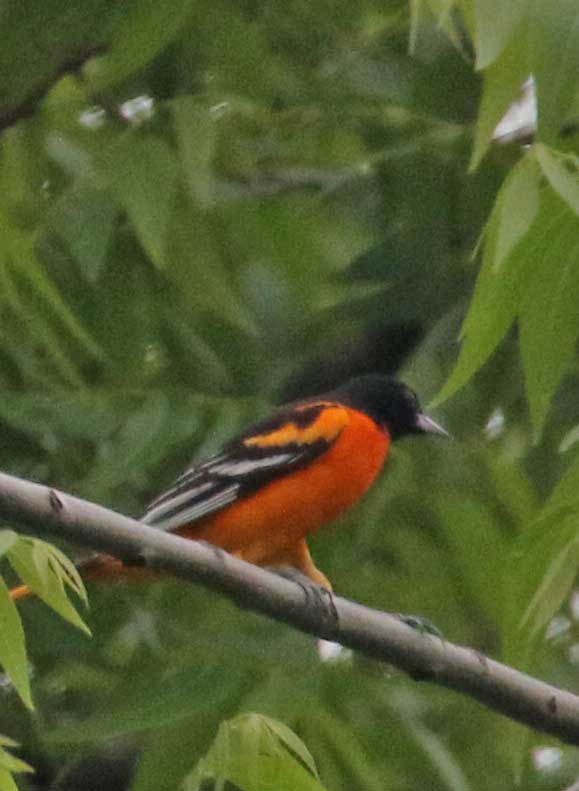
Plants can predict the arrival of birds.
Blooming and fruiting Mulberries forecast the appearance of orioles, tanagers and grosbeaks. Their disappearance presages the departure of waxwings.
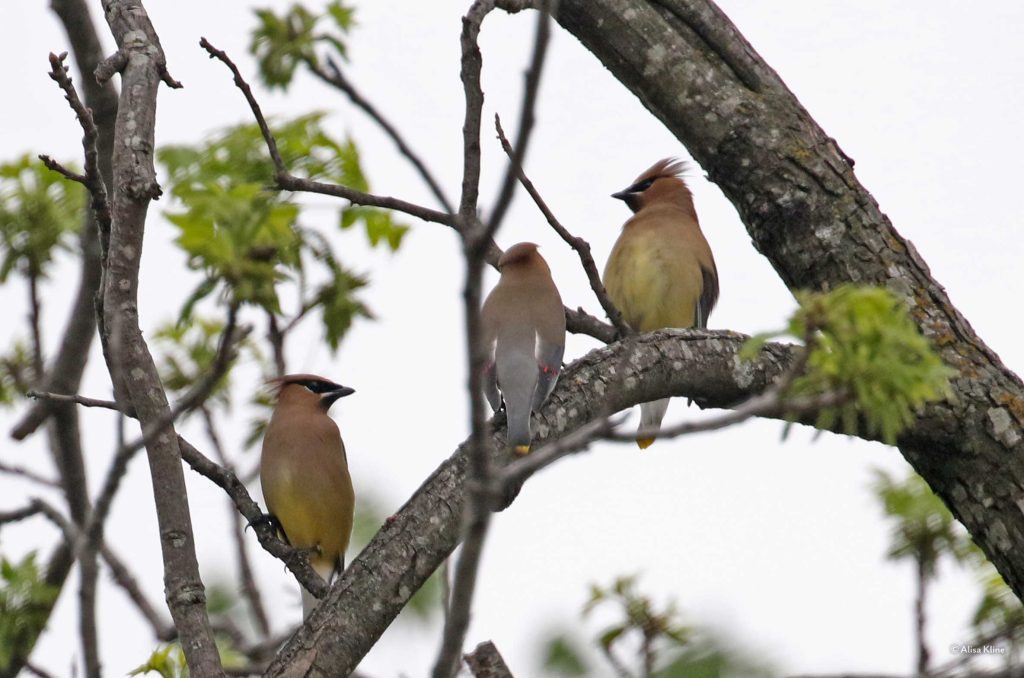
Cedar waxwings arrived in Houston a few months ago. For them, the mulberries time their departure. Waxwings don’t migrate far compared with other birds. They breed in northern Canada, but many just live year-round in the north east. Mostly, they mill around the country in large flocks, taking advantage of abundance. We are on the southern end of their yearly peregrinations They arrive in Houston in late November and their numbers build significantly in March and April as the mulberries come into fruit. Once the mulberries are done (right about now) the waxwings slowly head north, returning again next winter.
My enormous acacia tree that was taken by Ike could forecast the appearance of magnolia warblers. It was always magnolia warblers. Other warblers hopped through the pecan trees, probing those long catkins currently dumping pollen all over us. But the acacia was the domain of the magnolia warblers. They hunted insects drawn by the fragrant flowers, darting swiftly through the thorny branches. Once the acacia reached its peak, I could count on those colorful little birds showing up on their way from Central America to their breeding grounds near the arctic circle.
In the arctic, they feed in stands of dense conifers. Cornell Labs helpfully notes that they like to feed where foliage is easily available overhead. That describes the acacia tree nicely.
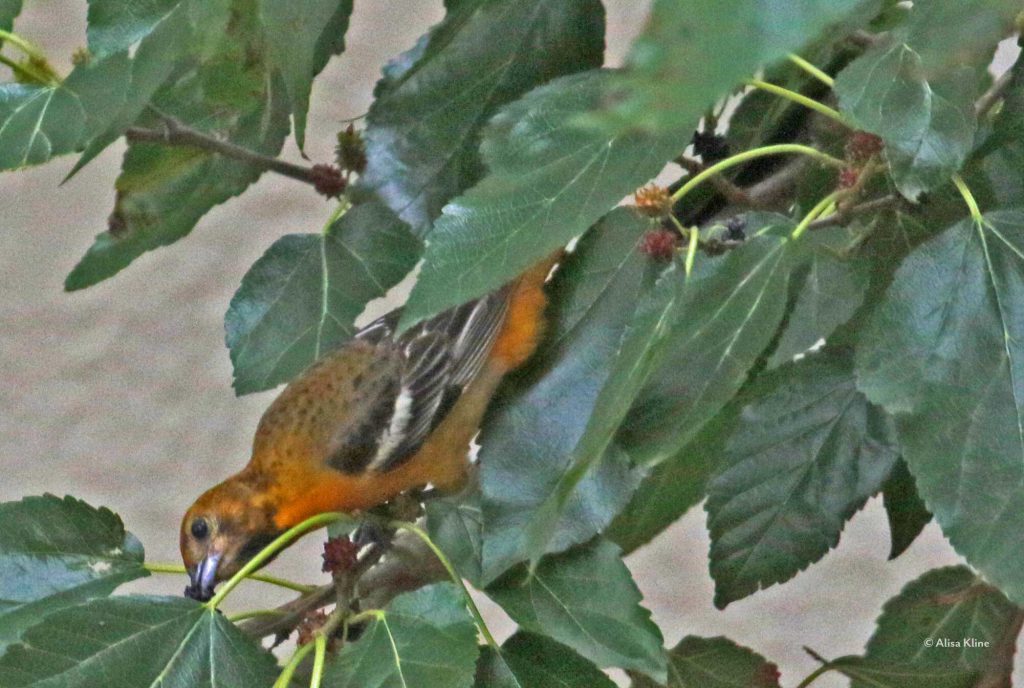
This female Baltimore oriole nibbles a mulberry from a neighbor’s tree. Since I have a perfectly lovely mulberry of my own, I was finding it annoying that I had to walk two doors down to find orioles to photograph. The mulberries on the neighbor tree are smaller than my own and I was starting to feel a bit insulted. So I tasted one of the favored mulberries. Much sweeter than mine. In fact, too sweet. But not for orioles. They prefer them overwhelmingly to my juicer, larger and slightly more acidic fruit.
It isn’t coincidence that food for all these seasonal visitors appears at precisely the time they show up. It works that way because it is in everybody’s interest that it does. Let me explain.
It is in the interest of all creatures to avoid death and reproduce. The biggest component in avoiding death is usually finding food. It can be argued that nearly everything most life does is in the interest of eating, reproducing, and avoiding getting eaten.
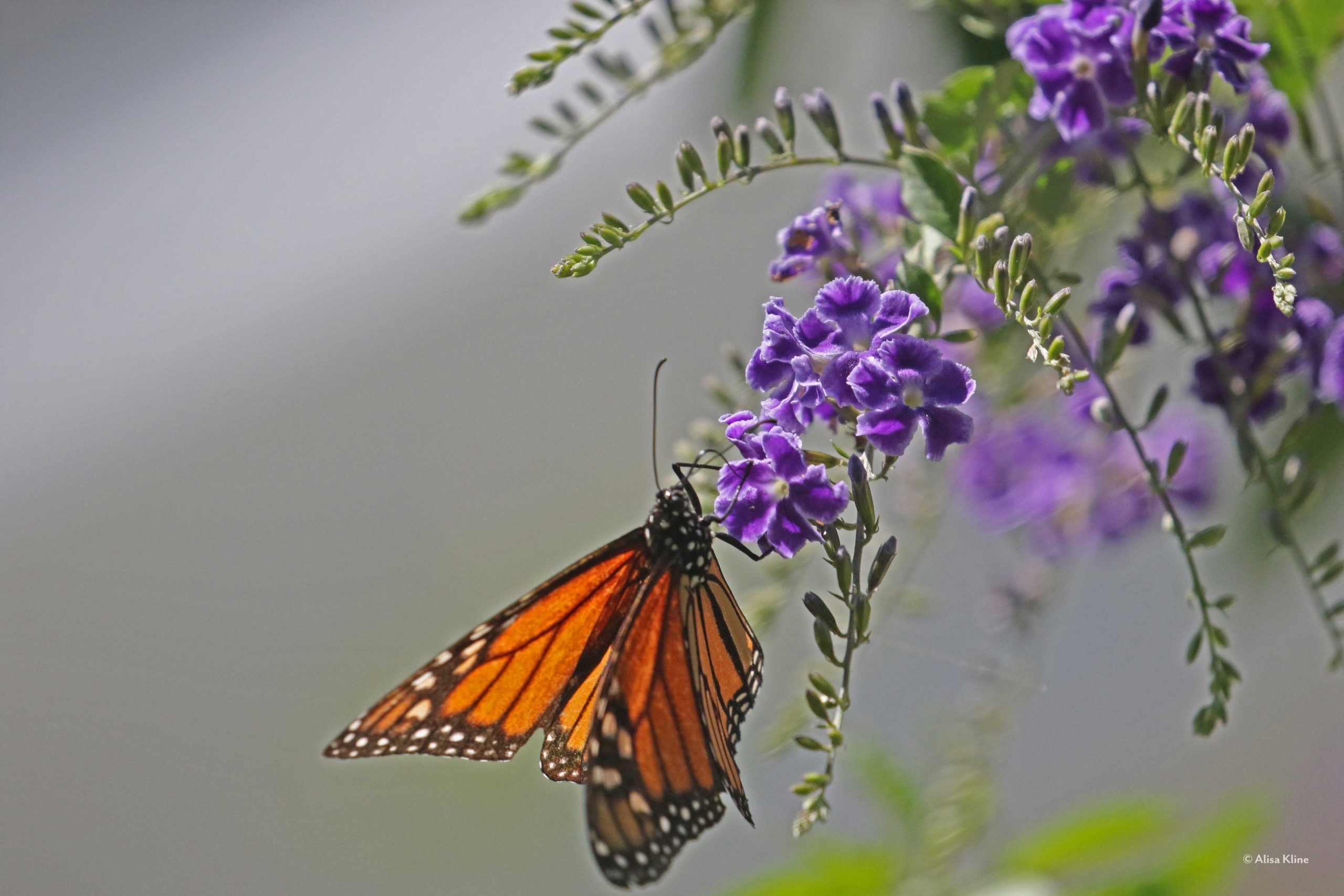
Birds aren’t the only one migrating right now. Houston is filling up with Monarch butterflies. Some of them will stay here, others are passing through on their way from wintering grounds in Mexico. If you notice them in your garden, watch for them to spiral above you in pairs. At least one of those two is likely a male. The boys spend their time chasing after every other monarch they see in hopes of finding a female who will mate with them. Think of them as eternal teenagers.
In the interest of continued eating, birds move around the world, spending seasons where food is plentiful and leaving when food becomes scarce or much more plentiful elsewhere. We call these movements migrations. When animals migrate, they aren’t making individual decisions, the entire population ups and moves houses. That’s a lot of mouths to feed along the way.
The logistics of moving huge biomasses of birds from one part of the globe to another are enormous and the opportunities for others to benefit from this abundance are enormous as well.
Plants benefit from this migration.
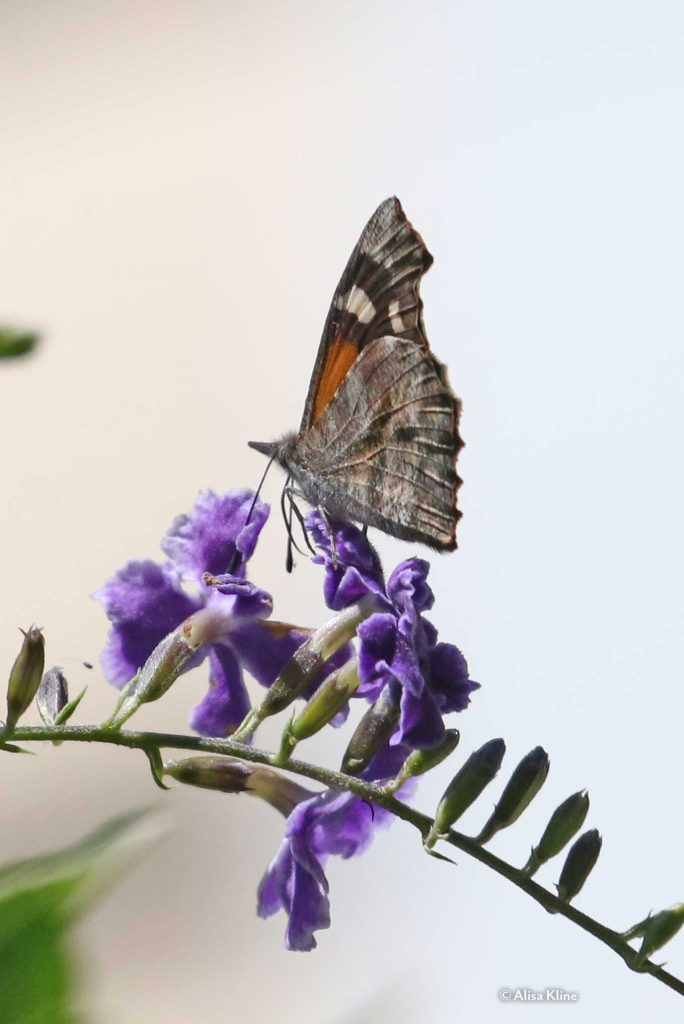
Monarchs aren’t the only migrating butterflies. This snout butterfly conducts migrations epic not for the distance covered (mere hundreds of miles), but in the numbers involved. I love them because, well, snout. But in doing a bit of research for this caption, I found a ton of great info, so expect a whole snout post in a week or so!
Plants have the same agendas as more mobile life forms: avoid dying (eat) and reproduce. But they do it very differently. Plants are complex chemical factories. They use the energy of the sun to break apart air molecules, turning carbon dioxide into sugars with a byproduct of oxygen. They can also mount chemical defenses if they are nibbled upon. Plants are very, very complicated things.
When it comes to reproduction, plants are risque swingers usually relying on a third party to make the fun happen. Don’t judge, they cannot move to find a mate, so they lure more mobile lifeforms and have them carry their sperm to some nearby egg. Pollination anyone?
Once a plant has arranged that egg and sperm be brought together, the result is a seed which, if it is lucky enough to land in just the right place, will grow into a new plant.
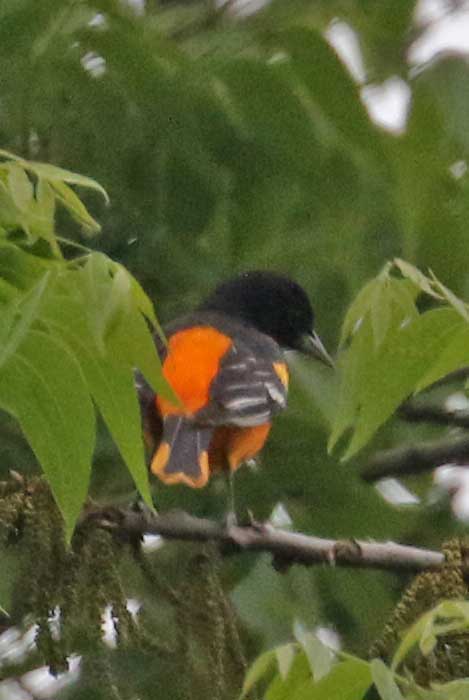
This male Baltimore oriole shows off his vibrant orange back. He is in a pecan above the mulberry. You can see the male catkins (pollen producing flowers in long strings). The orioles, along with all the warblers, poke round in those catkins looking for insects. Those catkins reliably predict the arrival of warblers.
The more effective a plant is at dispersing its seeds, the more effectively its genes get carried forward. If you are a smart plant, you recruit someone to carry your seeds far and wide.
That’s exactly what fruit’s for. The tasty part is an enticement to get your seeds eaten. The eaters distribute the seeds far and wide through the magic of pooping.
So back to our bird-forecasting mulberry. It makes fruit to get its seeds spread around. And a bunch of birds are reliably going to fly from south to north. If you time your fruit just right, that huge influx of hungry birds can carry your seeds for miles.
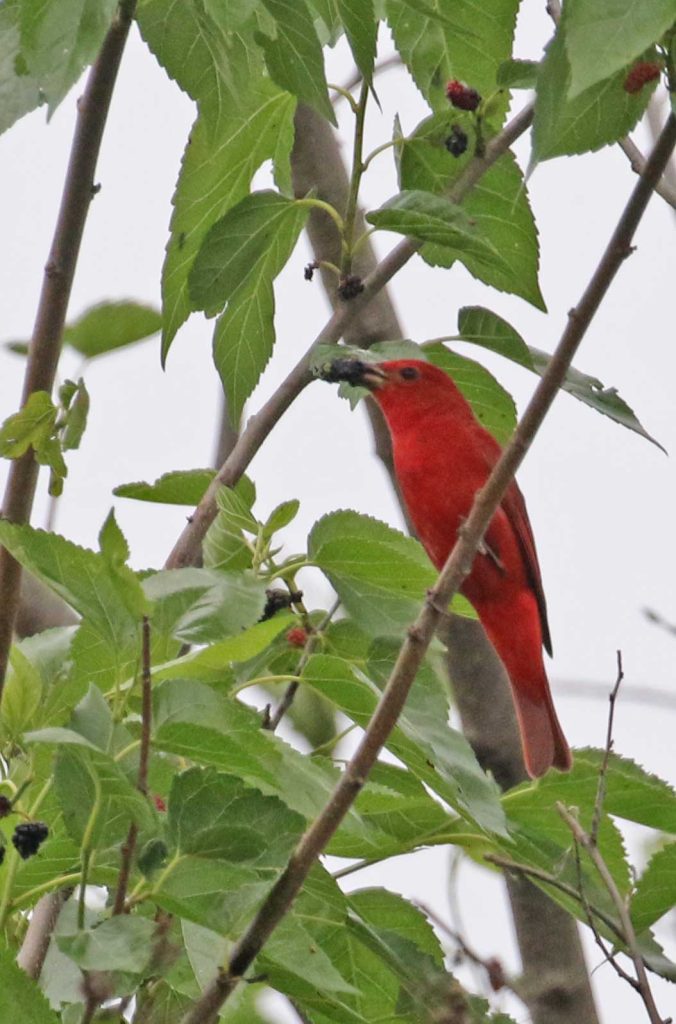
Orioles aren’t the only lovers of mulberries. This summer tanager visited a few weeks ago.
I don’t want to suggest that the mulberry figured this out. But the natural world as a system did. The mulberry variety whose fruit best coincided with the massive influx of birds was more successful at spreading its seed further and eventually became the dominant mulberry. The happy result is that mulberries predict the presence of migratory songbirds.
The natural world is a multitude of such synchronizations and this is one of the reasons that climate change is so catastrophic; bloom cycles will alter and plants which thrived in one climate zone, find themselves in another and die off. The result is that birds might appear before the mulberries, or after; the seeds don’t spread and the birds don’t eat and it’s better we don’t dwell on this because last week, my yard filled with Baltimore orioles, who showed up just in time to eat the mulberries.
Houston Naturama Results
Congratulations Team Nguyen! Led by their fearless captain Jennifer and backed up by Jimmy and Sushi the Pug. They have completed all the Naturama challenges of Houston Naturama and are hereby recognized on the Pro-Level honor role.
This is a rare distinction. That’s because no one is playing my game. Well, almost no one.
Allow me to once again sing the praises of Judith Schott who completed not only the original week one but week two as well. Add to hers the name Vaughn Phillips. She is something of a ringer, a fellow master naturalist who joins with me in giving environmental walks along the bayou. If the world ever opens up again, please join us and say hi to me and Vaughn. She too successfully completed all challenges.
Now comes what I think of as my gift group. I call them that because they were on bicycles, two couples(Jennifer above was in this group), who were stopped for a social distancing break in front of my house. I was out looking for challenge plants and delicately walked between them, trying to be as observant of safety as they were being. Of course, being me, I had to start talking and somehow it devolved into an impromptu nature talk and I had probably the best time I’ve had since they locked me in my house. Thank you all. And the gift that kept on giving, they have joined the challenge.
David, who was part of the other twosome in my sidewalk nature talk also went on to complete the Houston Naturama. He, too (with his last name if I ever find it out) is a winner.
And that’s that!
I have learned, during these weeks of play, that left to our own devices, Judith, Vaughn and I would happily study weeds, birds, bees all day long. I learned as well that if you put me face to face with interested and energized people bored senseless by the lockdown that I can initiate them into that first group.
The third thing I have learned is that while I adore being in that first group and I am thrilled by anything that moves people into that group, I am terrified of keeping track of who did what when. So I am officially declaring this almost completely unsuccessful and deeply distressing project a success. And now I walk away!
The blog, however, will continue and if anyone wants to share amazing and mundane things they have seen, or have a critter question, drop me a line at blog@alisakline.com. I’m locked up and in need of conversation and the real best part of Houston Naturama is that it gave me a chance to connect with some wonderful people.

